Key Historical Events to Demystify Eritrea
Where is Eritrea? How did it come to be a country? Key events in the ancient, colonial and revolutionary History of Eritrea.
Where is Eritrea?
Eritrea is in North East Africa in the area known as the Horn of Africa. It has 600 miles of coastline along the Red Sea. It shares borders with Sudan, Ethiopia and Djibouti.
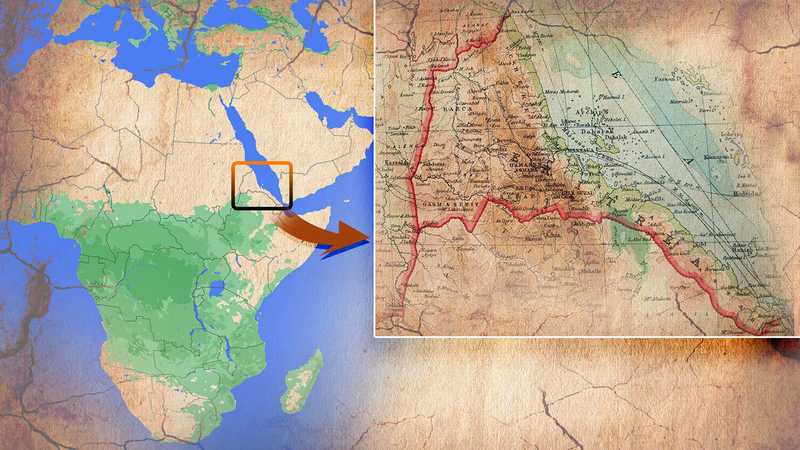 Eritrea, in the Horn of Africa by the Red Sea and Arabian Peninsula
Eritrea, in the Horn of Africa by the Red Sea and Arabian Peninsula
Ancient History of Eritrea
As a geographical and political entity, Eritrea was first defined as a colony of Italy in 1890. Before that, many of its territories were under different rules, with borders and alliances that shifted constantly.
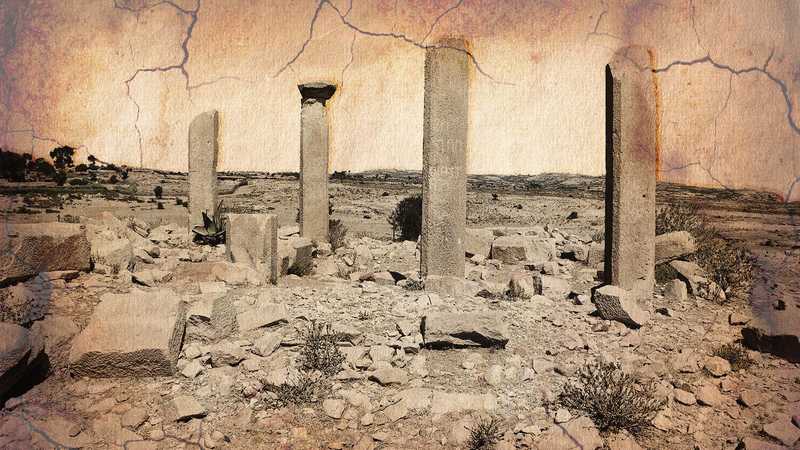 Temple ruins at Qohaito, an ancient trading post between Adulis and Aksum
Temple ruins at Qohaito, an ancient trading post between Adulis and Aksum
As the Horn of Africa was strategically significant for trade, many kingdoms and empires vied to control many areas in the current-day Eritrea. Many native kingdoms were established and thrived while many foreign invaders had their eyes on the area.
In antiquated history from around the 1st century AD, these trade routes were mentioned in a written account of a Greek traveler known as the “Periplus of the Erythraean Sea.” One of the mentioned in the account was Adulis, a well-developed ancient city and a trade hub on the Red Sea in the Gulf of Zula. It was linked to the D’mt and Aksumite empires at different times. Romans are said to have used it at some point.
Ruins of a Byzantine basilica from 5th century at AdulisRuins of a Byzantine basilica from 5th century at Adulis
The ancient Aksumite Empire rose to power to the south of current-day Eritrea. It was linked to the outside world through several trade posts and the harbor at Adulis. In its heyday in the 6th century, the empire dominated a vast region including modern-day Eritrea, northern Ethiopia, eastern Sudan, Yemen, and southern Saudi Arabia.
The Zagwe dynasty came to power with Aksum’s decline. It is believed to have been centered in Lalibela in northern Ethiopia and dominated many parts of modern Eritrea.
The Abyssinian Empire rose after the Zagwe dynasty’s decline. During this time, the coastal areas of modern Eritrea were under the Adal Sultanate, from the vicinity of modern-day Somalia and Djibouti. The land between the sea and interior highlands was aptly known as the Maekele Bahr, meaning between the Red Sea and the Mereb River. From this rose the autonomous Kingdom of Medri Bahri, the land by the sea, ruled by the Bahri Negassi (King of the Sea). The relationship with the Abyssinian Empire varied from time to time; from alliance and being a tributary kingdom, to rebellion that resulted in bloody conflicts.
Colonial History of Eritrea
The Ottomans arrived in mid mid-16th century and occupied the coastal areas, later developing the harbor city of Massawa. The kingdom of Medri Bahri, centered at Debarwa, was squeezed between the two empires, the Abyssinian to the south and southwest while the Ottomans from the east and northeast. Alliances of Medri Bahri would constantly switch between the empires, aligning itself with either side during clashes, including when fighting back the invasions of the Adal king Mohammad Gragn/Gurey from the southeast.
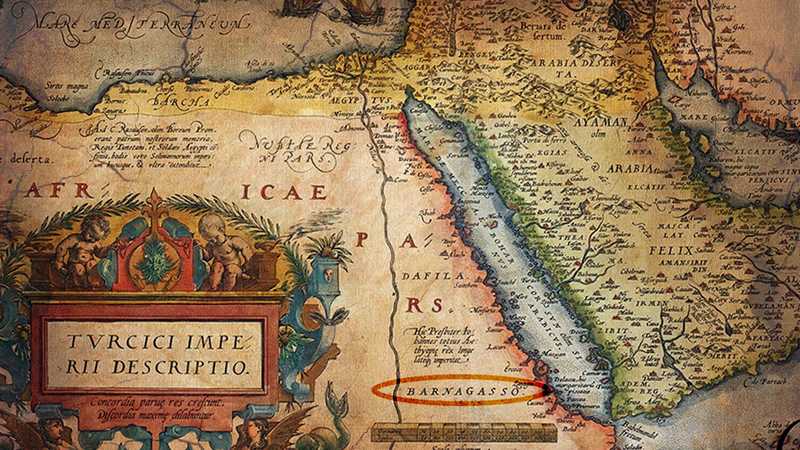 The Kingdom of Bahri Negassi as shown on a map of the Ottoman Empire
The Kingdom of Bahri Negassi as shown on a map of the Ottoman Empire
The capital of Medri Bahri, also known now as Mereb Mellash (land bordered by the Mereb River), eventually moved to the rising power of the house of Tsazzegga, in the central highlands of modern Eritrea. The relationship with the Abyssinian Empire (alliance, rebellion or tributary) continued to change from time to time. A notable era of uncertainty was when kingdoms and territories within the Abyssinian empire started to vie to usurp the crown and move the throne away from Gonder, where it was historically seated. The power of the Emperor of Abyssinia had become nominal with more powerful princes and warlords taking over huge swathes of territories in the Age of Princes (ዘመነ መሳፍንት) where many brutal raids and pillaging occurred in Mereb Mellash.
In the meantime, in the coastal areas, the Ottomans appointed the Naib of Massawa to rule over the northern coastal areas of modern Eritrea. In the mid-19th century, the Ottomans assigned the governorship of most of their empire on the Red Sea to their autonomous tributary, the Khedive of Egypt. The Egyptians would make many attempts to control all of Mereb Mellash which were unsuccessful, only being limited to scattered garrisons at Massawa and the surrounding area, Bogos (current-day Keren) and Kassala in the west.
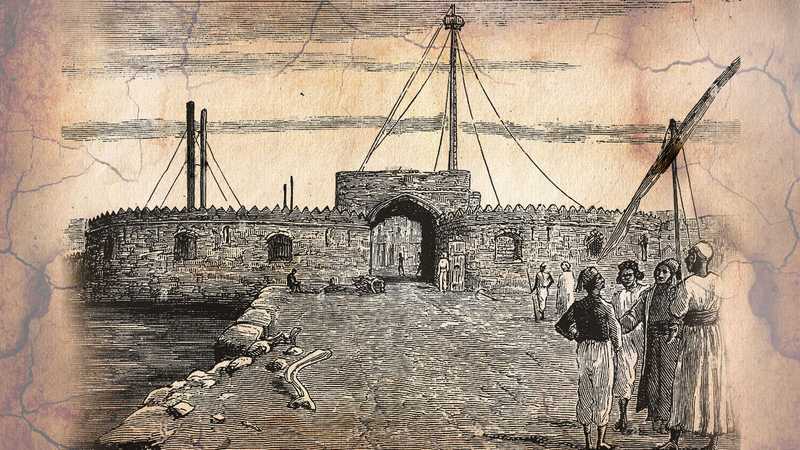 Town gate of the Ottoman harbor of Massawa on the Red Sea, Eritrea
Town gate of the Ottoman harbor of Massawa on the Red Sea, Eritrea
As the emperorship of Abyssinia moved from Gondar (Tewodros II) to Tigray (Yohannes IV), and eventually to Showa (Menelik II), Mereb Mellash was being raided from both the sea and the interior, by the Egyptians and the Abyssinians respectively. Yohannes fought the Egyptians in several battles, even defeating them in some, but he couldn’t dislodge them from the northern highlands of Bogos nor the coastal lowlands to the east. He also could not fully control the rebellious house of Hazzegga which sought to rule Mereb Mellash, at least with the recognition of the Abyssinian Monarchy, which he chose not to give. Raesi Woldemichael Solomon led the rebellion foiling several campaigns sent by Abyssinia to subdue him. Fatefully however, he would be enticed by Abyssinia with a truce and the recognition he sought, only for his powerful army to be disbanded and him to be jailed until Yohannes IV dies in battle with the Mahdists of Sudan.
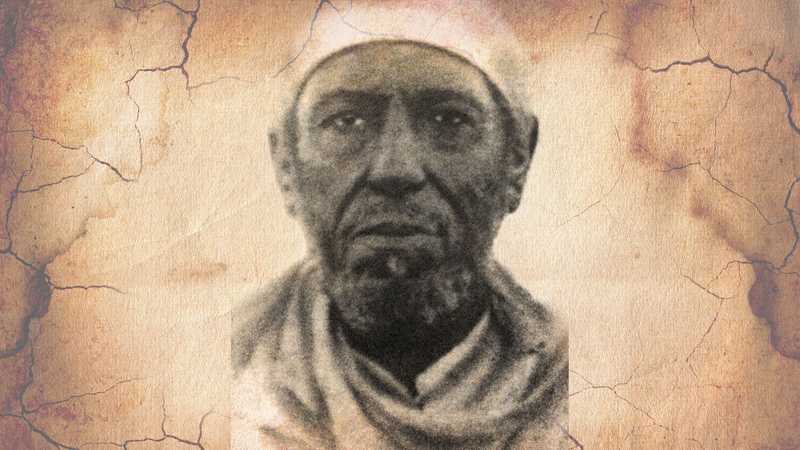 Raesi Woldemichael Solomon, ruler of Mereb Mellash
Raesi Woldemichael Solomon, ruler of Mereb Mellash
Right around this time, the Scramble for Africa brought European colonial interest in Africa with the opening of the Suez Canal, bringing more attention to the coastal lands of current-day Eritrea. Italy bought a piece of land in Assab, the southern extreme of modern Eritrea, and started expanding northward. It reached Massawa with the decline of the power of the Khedive of Egypt. With Yohannes IV’s demise at a battle with the Sudanese Mahdists at Metema, they took advantage of the vacuum and expanded to the interior taking more land from local nobility, imprisoning many in the Nakura Islands and killing most of them systematically in the process.
Degiat Bahta Hagos of Segeneiti led a rebellion against this Italian expansion unsuccessfully. He did seek help from the newly unified Ethiopia under Menelik II although his pleas were not answered. He was always opposed to foreign subjugation starting from the reign of Yohannes IV, when he notably killed the oppressive Embaye, son of Ras Araya, an Abyssinian high nobility.
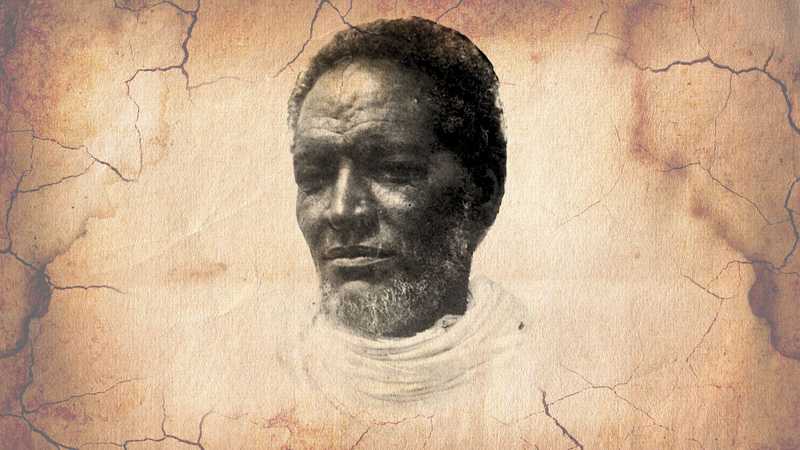 Degiat Bahta Hagos of Segeneiti
Degiat Bahta Hagos of Segeneiti
Menelik II, the new emperor of Ethiopia, stopped further Italian expansion into his territories using treaties and by waging war against them in several battles, the significant of which was the Battle of Adwa. He signed treaties with them agreeing to terms that outlined territories occupied by the Italians would remain as their colony which included modern Eritrea’s coastal plains, central and northern highlands and western lowlands bordering Sudan. With this new agreement, Mereb Mellash’s territories would be subsequently part of the greater Eritrean landmass.
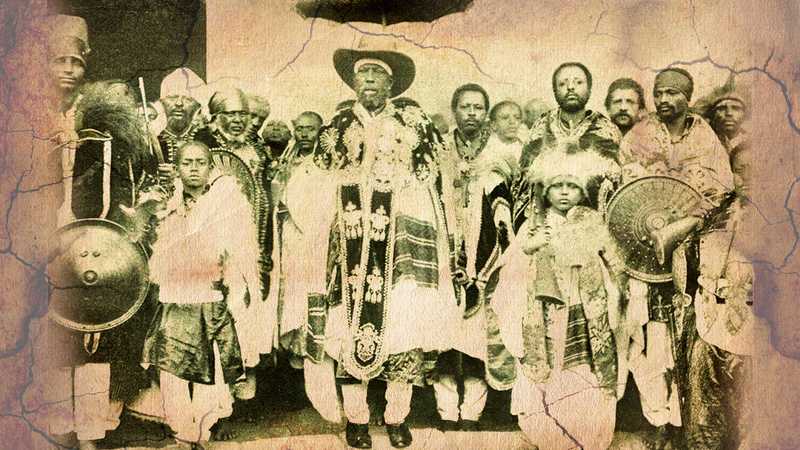 Emperor Menelik II with entourage
Emperor Menelik II with entourage
Italy declared the establishment of the Colony of Eritrea on January 1, 1890.
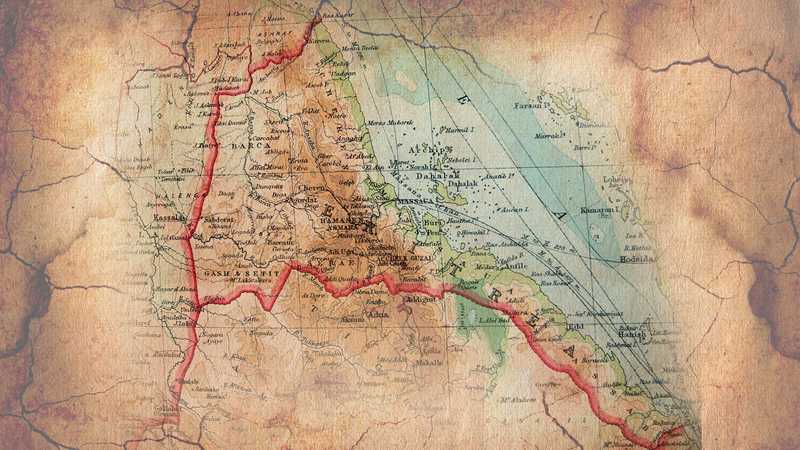 Italian colonial map of Eritrea
Italian colonial map of Eritrea
Italian occupation is considered one of the first modern apartheid colonial regimes in Africa. Most of the fertile land was taken by the new settlers from Italy. All existing traditional chiefdom was abolished and leaders were banished to remote islands or killed. There was a clear, oppressive separation of indigenous and white settlers. Opposition or any rebellion was brutally crushed as Bahta Hagos’s rebellion mentioned above. Territories were designated for segregation based on race and only those with the right permits could venture into the prohibited strictly-white zones. Many would come to resent this and those that were fortunate enough to have access to some limited education would start to form notions of freedom and draw parallels with other such colonized nations.
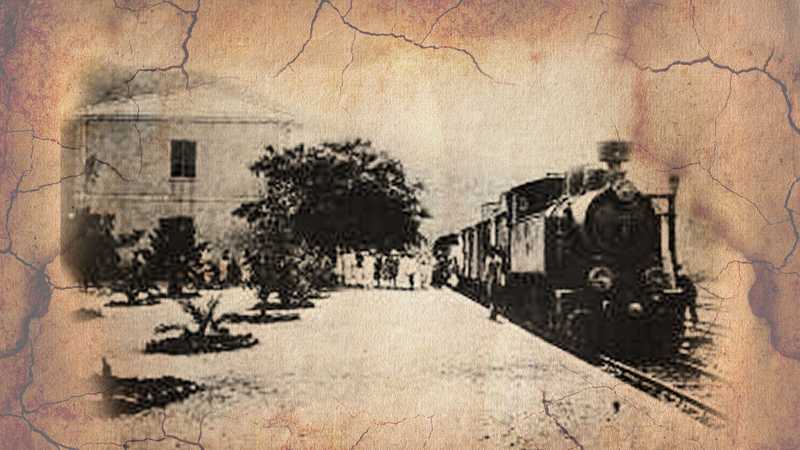 Italian colonial-era Massawa-Asmara railroad Station at Asmara
Italian colonial-era Massawa-Asmara railroad Station at Asmara
This era on the other hand was characterized by modernization, industrialization, commerce and vast public works projects around infrastructure, transportation and agriculture. This would indirectly provide technological exposure to the local population in developing skilled labor and acquiring general illiteracy, however small. Vast recruitment of the Ascari, military regiments consisting of indigenous men, helped Italy expand its territories in Somalia and Libya while developing a professional army. Setting aside the earlier Italian expansion from the coastal plains, this would span over 50 years until the Italians were defeated out of Eritrea. This extended political and economic decoupling of what would be the Eritrean society from the history shared with Abyssinia, later on, Ethiopia, would be the basis for the eventful post-colonial saga of the history of Eritrea and Ethiopia.
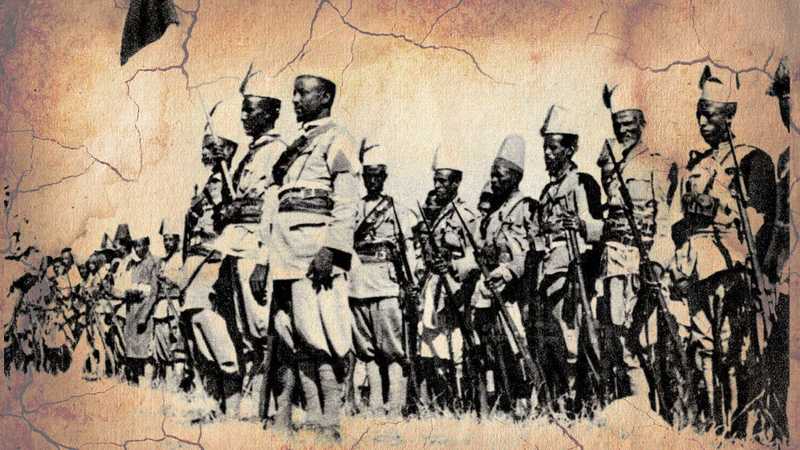 Eritrean Ascari in the Italian colonial army
Eritrean Ascari in the Italian colonial army
Italy had always the goal of taking control of the whole of Ethiopia, using Eritrea as its stepping stone. Although such plans went dormant after their defeat at the Battle of Adwa and the Treaty of Addis Ababa, a few decades later, they were rekindled by the new fascist leader Mussolini, Il Duce, to put Italy among Europe’s elite.
In 1935, with Haile Selassie I on the throne in Ethiopia, Italy launched the Abyssinian campaign with an industrially advanced army, completely overwhelming the Ethiopian sub-professional army. The emperor fled to exile to Britain. The Italians occupied vast territories in Ethiopia, including the capital Addis Ababa for 5 years. Resistance was rampant in the south of the country but they could not dislodge the Italians.
With the onset of World War II, Italy being part of the Axis, the Allies were at war with Italy. Britain set a campaign to defeat Italy out of Eritrea and Ethiopia, as part of the overarching Allies plan to remove the Axis from Africa completely. The British army defeated the Italians decisively. They put Haile Selassie I back on the throne in Ethiopia.
In Eritrea, the British set up the British Military Administration, BMA, until Eritrea’s fate would be decided. The British, claiming to be in a state of war and also needing repayment for the campaign, dismantled infrastructure and factories to salvage resources for the ongoing war or raise funds through re-sale. This was devastating for Eritrea in the short term and had dire consequences in the long term by making the case that Eritrea was no longer economically viable to be an autonomous state.
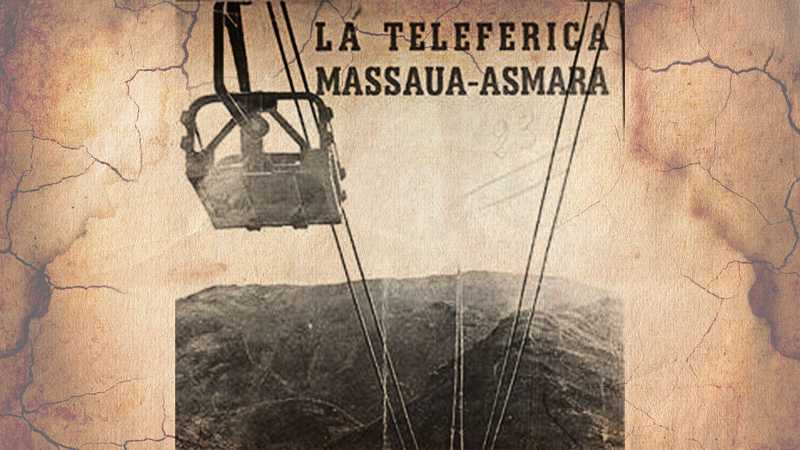 La Teleferica: The Asmara-Massawa cableway; dismantled and sold for scraps
La Teleferica: The Asmara-Massawa cableway; dismantled and sold for scraps
